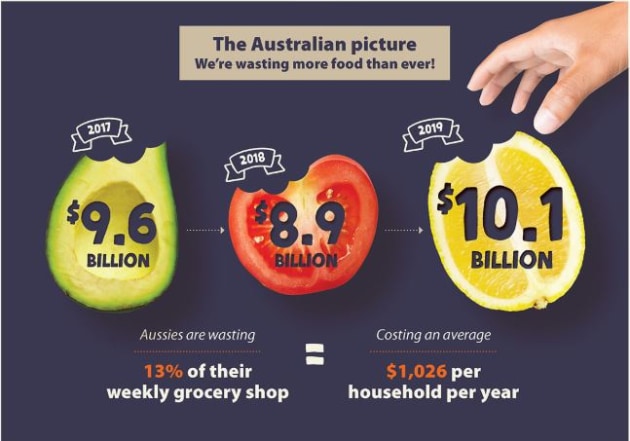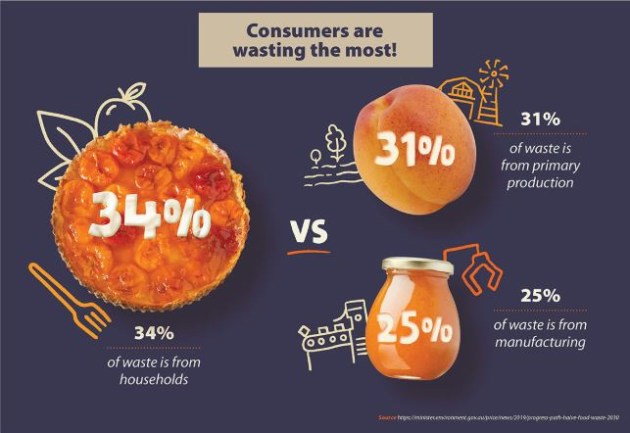Despite growing consumer awareness and campaigns to counter food waste, Australia’s annual food waste grew in 2019 to $10.1bn. The Rabobank 2019 Food Waste Report shows it increased by 13 per cent from $8.9m in 2018.
Statistics from 2016 show that Australia produces more than 7.3 million tonnes of food waste across the supply and consumption chain. The report found 31 per cent was from primary production and 25 per cent from manufacturing. Households contributed 34 per cent.

In 2019, there was an increase in food waste across all of the states. Queensland had the smallest increase. Rabobank said the average Australian household wastes $1026 of food every year, or 13 per cent of their total grocery buy. Other findings:
- Less than 3 out of 10 recognise the impact food waste has on the environment;
- Gen Z waste $1,446 of food annually;
- Baby Boomers are least wasteful of all Australians, throwing out $498 of their food;
- People living in capital cities waste 14 per cent of their weekly shop;
- People in rural areas who only waste 11 per cent; and
- Victoria is the most wasteful state, wasting 13.9 per cent of food annually.

Rabobank Australia head of client experience Glenn Wealands said: “Food waste is one of the most significant challenges facing our nation and planet today. According to the Food Sustainability Index, developed by The Economist’s Intelligence Unit, Australia is the fourth highest food waster in the world.
“Given the increasing pressure on the planet to provide for a growing population there is an urgent need for greater action across governments, industry, retailers, and consumers to drive real change.”
The report also found that Generation Z, who make up a quarter of the population and are the most socially aware generation, are the biggest culprits when it comes to food waste. The survey found they bin $1446 of the food they purchase every year, up $234 from 2018.

The Rabobank Financial Health Barometer / Food Waste Report 2019 is an annual survey of Australians’ attitudes and behaviours towards saving, debt, farming, food production and food waste. The Food Waste Report highlights its latest research on food waste, covering consumer trends, habits, concerns and action.
The survey has been running for nine years and polls more than 2300 financial decision makers aged between 18 and 65. Results are weighted by gender, age and location according to statistics from the Australian Bureau of Statistics.
Packaging is seen as a solution to the problem of food waste, and APPMA members recently heard from Amy Cobb of OzHarvest on how the issue can be tackled.






